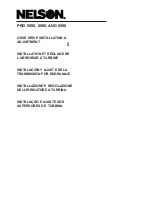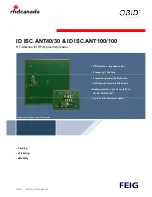
Appendix D Register-Level Programming
PC-DIO-96/PnP User Manual
D-14
©
National Instruments Corporation
/* EXAMPLE 1*/
outp(cnfg,0x80);
/* Ports A, B, and C are outputs. */
outp(porta,0x12);
/* Write data to port A. */
outp(portb,0x34);
/* Write data to port B. */
outp(portc,0x56);
/* Write data to port C. */
/* EXAMPLE 2*/
outp(cnfg,0x90);
/* Port A is input; ports B and C are outputs. */
outp(portb,0x22);
/* Write data to port B. */
outp(portc,0x55);
/* Write data to port C. */
valread = inp(porta);
/* Read data from port A. */
/* EXAMPLE 3 */
outp(cnfg,0x82);
/* Ports A and C are outputs;
port B is an input. */
/* EXAMPLE 4 */
outp(cnfg,0x89);
/* Ports A and B are outputs;
port C is an input. */
}
Mode 1—Strobed Input
In mode 1, the digital I/O bits are divided into two groups: group A and
group B. Each of these groups contains one 8-bit port and one 4-bit
control/data port. The 8-bit port can be either an input or an output port,
and the 4-bit port is used for control and status information for the 8-bit
port. The transfer of data is synchronized by handshaking signals in the
4-bit port.
The control word written to the CNFG Register to configure port A for
input in mode 1 is shown as follows. Bits PC6 and PC7 of port C can be
used as extra input or output lines.
Summary of Contents for PC-DIO-96/PnP
Page 46: ......
Page 47: ......
Page 48: ......
Page 49: ......
Page 50: ......
Page 51: ......
Page 52: ......
Page 53: ......
Page 54: ......
Page 55: ......
Page 56: ......
Page 57: ......
Page 58: ......
Page 59: ......
Page 60: ......
Page 61: ......
Page 63: ......
Page 64: ......
Page 65: ......
Page 66: ......
Page 67: ......
Page 68: ......
Page 69: ......
Page 70: ......
Page 71: ......
Page 72: ......
Page 73: ......
















































